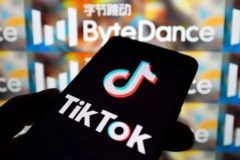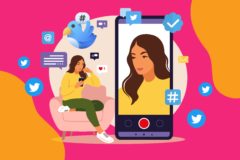On July 4, Mark Zuckerberg released a new microblogging platform, Threads, a social network that was widely expected to be an alternative to Twitter. However, less than two weeks after its launch, engagement is in decline and it looks like overthrowing a 17-year-old app takes a lot more than initial excitement.
On July 4, 2023, at about 12:30 pm WAT, Meta boss Mark Zuckerberg announced the launch of Threads, a new microblogging platform powered by Instagram. In less than six hours, the app amassed a shocking five million registered users and the number went up to 100 million after a week, the highest number for any social media platform. Threads was largely touted to be Twitter’s successor, but without the news and heavy political conversations that made Twitter a toxic town.
But is it?
After nearly two decades of reign as the epicentre of online conversations, Twitter looks to be shrinking as users are fleeing the chaotic 2010s social media scene for platforms that can facilitate conversations in a less messy environment. According to a report by data company, Similarweb, the company’s web visits and app usage have steadily dropped since the beginning of 2023. The platform has been called out for its algorithm and design which reward vileness with more visibility, creating a toxic environment for users.
Twitter is not alone. Instagram (also owned by Meta), once simply a popular photo-sharing platform, has seen its usage threatened by other social media apps, TikTok and BeReal. The platform, which was initially established to share photos, has been frequently condemned for promoting superficiality and prioritising ads over genuine interactions, with younger users favouring apps like BeReal that promote the sharing of real, unfiltered photos.
On July 1, 2023, Twitter introduced a view limit for users, capping the number of tweets they could view per day to 6,000 for verified accounts and 600 for unverified accounts.
This downtime on Twitter served as the proverbial nail in the coffin for a lot of Twitter users who finally got the push to leave the social platform and consider alternative platforms. SPILL, a new meme-forward social platform that calls itself a safe space for marginalised groups and culture drivers saw its number of registered users go up as high as 100,000, 30 times more than before the incident. The app, which launched in mid-June 2023 and is invite-only, became the most downloaded social media app on Monday, July 3, two days after Twitter imposed a view limit.
Other social networks like Trump’s TRUTH Social, which had been around since February 2022, also saw a 30% increase in traffic after Twitter’s update, eventually suffering a temporary crash as servers weren’t equipped to handle the influx from Twitter.
According to Mark Amaza, a policy expert, while a lot of people are looking to leave social media platforms like Twitter for newer and less chaotic alternatives, these new platforms might not have what it takes to replace existing social media platforms.
Amaza is extremely active on Twitter, where he’s been since 2009, and before that, he was an active Facebook user with close to 2,000 friends. While the move from Facebook to Twitter and Instagram was quite easy for him in 2009, he doesn’t think it’ll be the same this time around, especially for people who already have spent a long time on Twitter, as a lot of things are different.
According to him, it was easier to transition to Twitter from Facebook because it has a certain “stickiness” and was different from Facebook.
“With Facebook, you only could interact with your friends or people whose requests you approve, and so it was kind of limited in the interactions and overall experience. Twitter, however, is more open and gives you access to anyone as long as they have an account.”
After 14 years on Twitter, Amaza is suffering from social media fatigue and finds Twitter somewhat annoying, for the most part, due to how toxic it’s become. While he’s learnt to navigate the app well, he’s not entirely sure that he’d join Twitter today if he wasn’t already using the platform. He admits to having engaged in toxic interactions sometimes in the past, but according to him, he’s now older and has experienced a lot of personality growth, which now makes the platform largely inhospitable to him due to the unsavoury interactions that dominate the space.
Do newer social media platforms stand a chance?
Despite its impressive numbers in the beginning, user engagement on Threads has dropped. According to Similarweb, Threads’ daily active users fell from 49 million after its launch to 23.6 million users last Friday. Similarly, the app’s average usage time also fell from 21 minutes to six minutes over the same timeframe.
TRUTH Social has also been unable to meet the projected number of users. Five days ago, the network’s head of engineering resigned amidst the platform’s struggle to show consistent growth. The network has only been able to bag two million users out of its projected 56 million users by 2024. To compare, Twitter has over 350 million users while Instagram and Facebook have two billion and 2.9 billion respectively.
Saratu Abiola, a journalist and communications strategist, believes that a new social network would only work if they don’t try to replicate another, as the political environment that allowed for the style of older networks to grow rapidly simply isn’t there anymore.
“You can’t replicate another social media app. Threads can’t replicate Twitter, for example. Building a social media network post-Cambridge Analytica will never have the trust networks as building one pre-Cambridge Analytica. Twitter and Instagram require you to know some people, and that’s a big responsibility because these people shape your experience on the platform. Nearly all of the other platforms I’ve seen also require some form of social trust, and that’s hard to cultivate in this climate.”
According to Abiola, platforms that are capable of providing unique experiences will most likely be the ones to witness sustainable growth. “What’s the point of joining another platform where the value I get is from the people that I know, and I already follow them on one platform?” she asks.
“TikTok is almost the only social network that has achieved this. It is the only platform where you don’t need to know anybody to have a good time. You don’t need to look for approval or your community, and it allows for a different kind of interaction. The app has almost democratised virality which is something that other platforms haven’t been able to do, and it breaks through the balkanisation that we see on social media,” Abiola says.
Abiola stopped using Facebook as a social network in 2015 and mainly minded Twitter, Instagram, and LinkedIn. At first, Facebook was where she exchanged thoughts with friends until she joined Twitter in 2009 as her job as a journalist required her to interact with key players around Africa and distribute her stories, which Twitter was best suited for. Eventually, she started getting to know a lot of people and building community in the process, which replaced the community on Facebook.
Fourteen years later, Saratu still actively uses Twitter but confesses that the elements that drew her to the app at first aren’t still there for the most part. The atmosphere has changed, and it has become a lot more toxic which is becoming increasingly uncomfortable for her. On what causes the toxicity, Abiola has two theories: the Nigerian Twitter community not being as clearly segmented and the political situation offline also being hostile and tense, consequently permeating online conversations.
“In America, for example, Twitter is more segmented. You have political Twitter, entertainment Twitter, feminist Twitter, etc. There are different spheres and everyone just has their own little pockets. In Nigeria, there’s a lot more intermingling of celebrity culture and what this means is that topics on Twitter are less separated. The tech folks don’t stay as just tech folks, they also comment on everything else. Everyone is everywhere discussing the same things.”
The second reason she attributed to the lack of trust in social platforms is the general socio-political landscape offline.
“In the early 2010s, there was a sense of optimism in the future of Africa and the positivity seeped into online interactions and allowed an atmosphere of trust among African communities online. When things are dire, socially, politically, and economically, people tend to balkanise. There’s a lot more fascism and the atmosphere around the place starts to go sour. Twitter as an app is a lot more sensitive to these changes in context than a lot of other platforms,” she shared.
Trust is a prerequisite in how people navigate social media platforms and engage with others. Social media platforms typically require a lot of sharp, interpersonal interactions on a variety of topics and this is difficult to do without trust—first in the platform, and then in the other people. In recent years, trust in social media platforms has started to wane. There has been a rise in toxicity and superficiality online, which affects interactions as users are more wary of other users and less open to interacting with people they don’t already know. People form relationships on social media based on their history of interaction, but with a lack of trust, genuine interactions are scarcer.
The assumption of toxicity and fakeness cultivated by Twitter and Instagram might prove to be a stumbling block for a lot of new networks, especially those operating on open community models. New users of these apps don’t go there to meet new people anymore or form new communities as much as they do to find their pre-existing communities of people they already interact with. Unlike networks like MySpace which ran from 2003 to 2008, platforms like Twitter and Instagram have dominated for over a decade, which is a long time for people to form attachments and build bonds that have become a part of their lives.




















